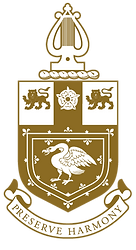
Thomas Edward Rendle was born on 14th December 1884 in Bedminster, Bristol. He was the son of James and Charlotte Rendle, his father being a painter and decorator. On 7th February 1906, he married Lilian Crowe. They had two children, Ruby and Edward.
Rendle joined the 1st Battalion, Duke of Cornwall's Light Infantry in 1902 and spent 4 years in South Africa. He was posted to France in August 1914 and was at Ypres in November. As a Bandsmen (Tuba player, see picture below), one of his duties was 'stretcher bearer', a role that led to his action on 20th November. His VC citation was in the London Gazette on 11th January 1915.
The citation read:
"For conspicuous bravery on 20 November 1914 near Wulverghem, when he attended to the wounded under very heavy shell and rifle fire, and rescued men from the trenches in which they had been buried by the blowing in of the parapets by the fire of the enemy's heavy howitzers."


Left is a painting (oil on canvas) by David Rowlands that records with great tension and atmosphere the scene on the day of Rendle's heroic action. The picture was commissioned by the Royal Military School of Music and hangs in the Mess at Kneller Hall. Grateful thanks are extended to Mr Rowlands for permission to use his picture.
The Musicians' Company had decided that all allied professional musicians that were awarded the Victoria Cross during the Great War, would also be recognised by the Company through the presentation of a Gold Watch. The introductory page of this section (Click Here) showed a number of pictures of the watch which was in fact the actual one given to Thomas Rendle. Another picture of this watch is shown below.
It was originally planned that Thomas Rendle VC would be presented with his Musicians Company Gold Watch by the Lord Mayor (Sir Charles Johnston) at Mansion House on 8th March 1916 (along with two other musician VC recipients, Spencer John Bent and William Kenny). However, Rendle was unable to attend as he was still receiving treatment in hospital (see below). Instead, his Gold Watch was presented to him at the Oxford & Cambridge Club in Pall Mall on 19th March 1915.
From the Daily Mirror - January 14th 1915. Caption reads:
"Bandsman Thomas Edward Rendle of the Duke of Cornwall’s Light Infantry, has been awarded the Victoria Cross for rescuing wounded from the trenches under heavy shell and rifle fire. He is seen at the Exeter Hospital, where he is revovering from his wounds."
Bandsman Thomas Rendle VC received his medal from King George V at Buckingham Palace on 12th July 1915. The image right (from the Daily Mail of 13th July 1915) shows him centre, with other recipients outside the Palace gates.

© DCLI Regimental Museum
His VC and other medals are held at the Duke of Cornwall's Light Infantry (DCLI) Regimental Museum in Bodmin, Cornwall.
© DCLI Regimental Museum

© DCLI Regimental Museum
Band Sergeant Thomas Edward Rendle VC left the Army in 1920 and returned to live in South Africa, where, for many years, he was a part-time bandmaster with the Duke of Edinburgh’s Own Rifles, Cape of Good Hope. He died in 1946 at the age of 61 and is buried in Cape Town. A memorial stone was unveiled in his home town of Bedminster in November 2014 to mark the 100th anniversary of the deed at Wulverghem.




The Royal Military School of Music occupies Kneller Hall in Twickenham which has been recognized as the home of Army music since its foundation in 1857. The Phase 2 Musicians course provides training for all soldiers joining the Corps of Army Music. Students on this course are known as the "Rendle VC Troop".

: :





